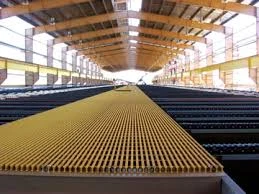
-
 Afrikaans
Afrikaans -
 Albanian
Albanian -
 Amharic
Amharic -
 Arabic
Arabic -
 Armenian
Armenian -
 Azerbaijani
Azerbaijani -
 Basque
Basque -
 Belarusian
Belarusian -
 Bengali
Bengali -
 Bosnian
Bosnian -
 Bulgarian
Bulgarian -
 Catalan
Catalan -
 Cebuano
Cebuano -
 China
China -
 China (Taiwan)
China (Taiwan) -
 Corsican
Corsican -
 Croatian
Croatian -
 Czech
Czech -
 Danish
Danish -
 Dutch
Dutch -
 English
English -
 Esperanto
Esperanto -
 Estonian
Estonian -
 Finnish
Finnish -
 French
French -
 Frisian
Frisian -
 Galician
Galician -
 Georgian
Georgian -
 German
German -
 Greek
Greek -
 Gujarati
Gujarati -
 Haitian Creole
Haitian Creole -
 hausa
hausa -
 hawaiian
hawaiian -
 Hebrew
Hebrew -
 Hindi
Hindi -
 Miao
Miao -
 Hungarian
Hungarian -
 Icelandic
Icelandic -
 igbo
igbo -
 Indonesian
Indonesian -
 irish
irish -
 Italian
Italian -
 Japanese
Japanese -
 Javanese
Javanese -
 Kannada
Kannada -
 kazakh
kazakh -
 Khmer
Khmer -
 Rwandese
Rwandese -
 Korean
Korean -
 Kurdish
Kurdish -
 Kyrgyz
Kyrgyz -
 Lao
Lao -
 Latin
Latin -
 Latvian
Latvian -
 Lithuanian
Lithuanian -
 Luxembourgish
Luxembourgish -
 Macedonian
Macedonian -
 Malgashi
Malgashi -
 Malay
Malay -
 Malayalam
Malayalam -
 Maltese
Maltese -
 Maori
Maori -
 Marathi
Marathi -
 Mongolian
Mongolian -
 Myanmar
Myanmar -
 Nepali
Nepali -
 Norwegian
Norwegian -
 Norwegian
Norwegian -
 Occitan
Occitan -
 Pashto
Pashto -
 Persian
Persian -
 Polish
Polish -
 Portuguese
Portuguese -
 Punjabi
Punjabi -
 Romanian
Romanian -
 Russian
Russian -
 Samoan
Samoan -
 Scottish Gaelic
Scottish Gaelic -
 Serbian
Serbian -
 Sesotho
Sesotho -
 Shona
Shona -
 Sindhi
Sindhi -
 Sinhala
Sinhala -
 Slovak
Slovak -
 Slovenian
Slovenian -
 Somali
Somali -
 Spanish
Spanish -
 Sundanese
Sundanese -
 Swahili
Swahili -
 Swedish
Swedish -
 Tagalog
Tagalog -
 Tajik
Tajik -
 Tamil
Tamil -
 Tatar
Tatar -
 Telugu
Telugu -
 Thai
Thai -
 Turkish
Turkish -
 Turkmen
Turkmen -
 Ukrainian
Ukrainian -
 Urdu
Urdu -
 Uighur
Uighur -
 Uzbek
Uzbek -
 Vietnamese
Vietnamese -
 Welsh
Welsh -
 Bantu
Bantu -
 Yiddish
Yiddish -
 Yoruba
Yoruba -
 Zulu
Zulu
Exploring the Benefits of FRP Underground Storage Tanks for Various Applications
Understanding FRP Underground Tanks Advantages and Applications
FRP (Fiberglass Reinforced Plastic) underground tanks have gained significant traction in various industries due to their durability, corrosion resistance, and lightweight properties. These tanks are primarily used for storing liquids such as water, chemicals, fuel, and various industrial fluids. This article aims to explore the advantages and applications of FRP underground tanks.
Advantages of FRP Underground Tanks
1. Corrosion Resistance One of the primary benefits of FRP tanks is their excellent resistance to corrosion. Unlike traditional steel or concrete tanks, FRP does not rust or degrade when exposed to harsh chemicals or environmental conditions. This makes FRP tanks an ideal choice for storing corrosive substances, ensuring a longer lifespan and reduced maintenance costs.
2. Lightweight and Strong FRP materials are significantly lighter than their metal and concrete counterparts. This lightness facilitates easier transportation, installation, and handling. Despite being lightweight, FRP tanks maintain impressive structural strength and integrity, making them capable of withstanding heavy loads and external pressures.
3. Customization FRP tanks can be easily customized to meet specific requirements. Manufacturers can create tanks in various shapes, sizes, and configurations to fit specific installation sites or storage needs. This flexibility allows businesses to optimize space and ensure that their storage solutions align with operational demands.
4. Environmental Friendliness As industries increasingly focus on sustainability, FRP tanks stand out due to their eco-friendly manufacturing processes and materials. They are often made from recycled materials and are fully recyclable at the end of their lifespan. Additionally, their corrosion-resistant nature helps prevent leaking, protecting the surrounding environment from hazardous spills.
5. Ease of Installation Installing FRP underground tanks is generally straightforward, requiring less intensive machinery and labor compared to heavier options. This can lead to reduced installation costs and quicker project timelines.
Applications of FRP Underground Tanks
frp underground tank

FRP underground tanks find applications across various sectors, including
1. Petroleum Industry In the fuel storage sector, FRP tanks are widely used for underground storage of gasoline, diesel, and other petroleum products. Their resistance to corrosion and leaking makes them a preferred choice for environmentally sensitive applications, particularly in areas where groundwater protection is paramount.
2. Wastewater Treatment FRP tanks are also utilized in wastewater treatment facilities. Their ability to resist chemical attack makes them suitable for storing and processing waste materials, ensuring efficient operation while minimizing environmental impact.
3. Agriculture In agricultural settings, FRP tanks are employed for storing fertilizers and pesticides. These tanks help prevent chemical contamination of soil and water, aligning with sustainable farming practices.
4. Chemical Storage Industries that handle various chemicals often rely on FRP tanks for secure storage. The ability to withstand aggressive chemicals while ensuring minimal maintenance is essential for operations in sectors like manufacturing and pharmaceuticals.
5. Water Supply Systems Municipalities and private enterprises use FRP tanks as reliable water storage solutions. Their durability and resistance to algae growth and other contaminants make them suitable for potable water applications.
Conclusion
FRP underground tanks represent a significant advancement in storage technology, offering a blend of resilience, flexibility, and environmental consciousness. As industries evolve and prioritize sustainability and safety, the demand for FRP tanks is likely to continue growing. With their diverse applications and inherent advantages, FRP tanks are poised to play a crucial role in the future of storage solutions across various sectors.









